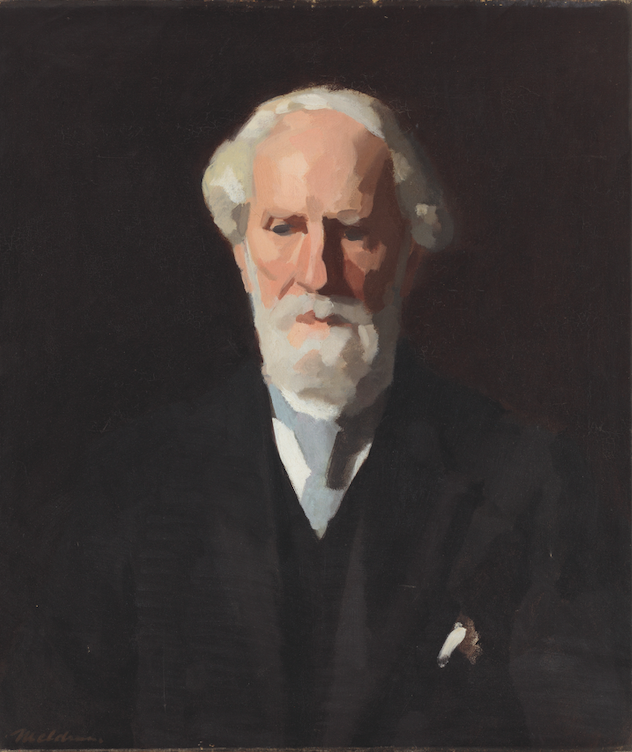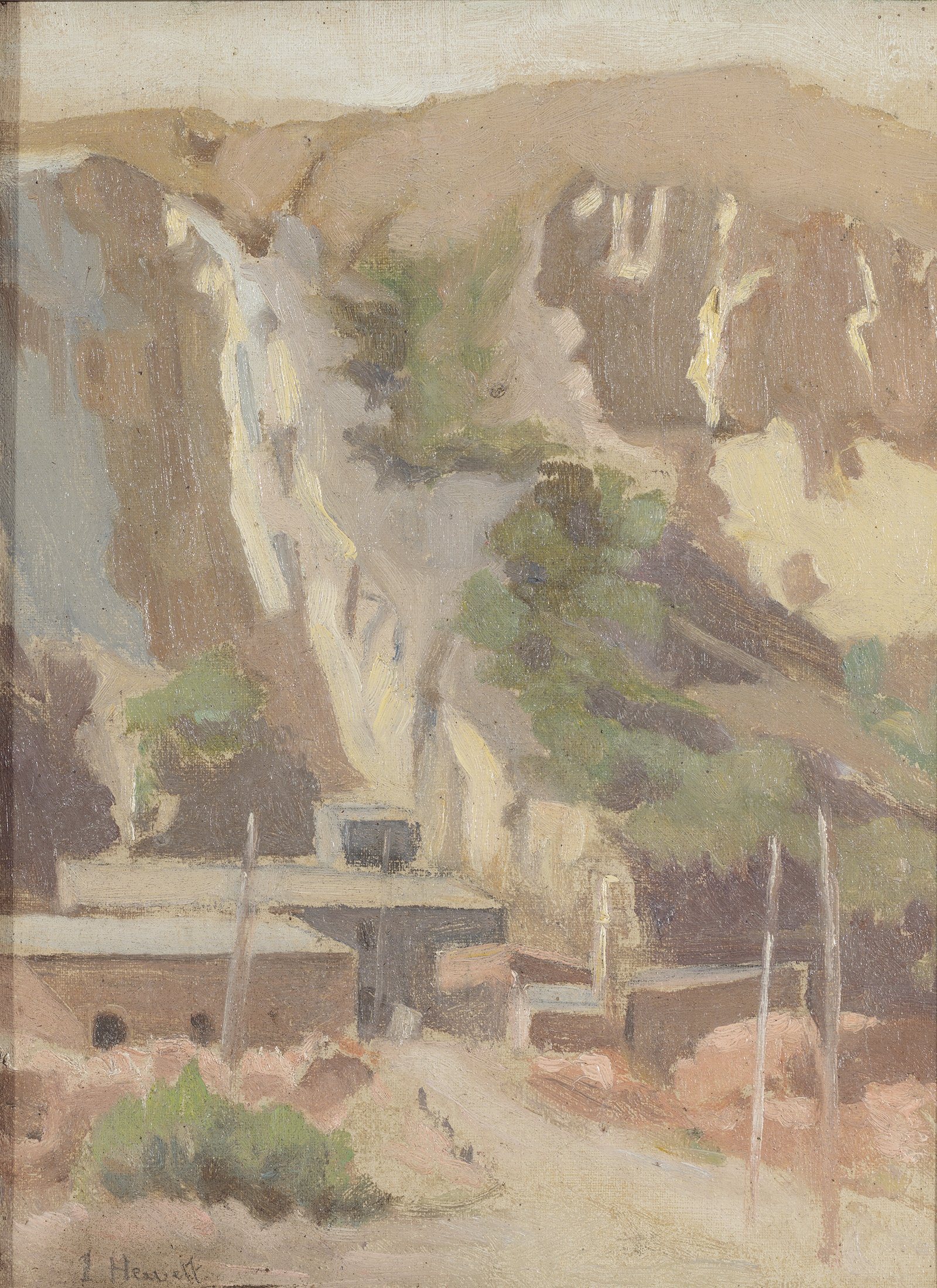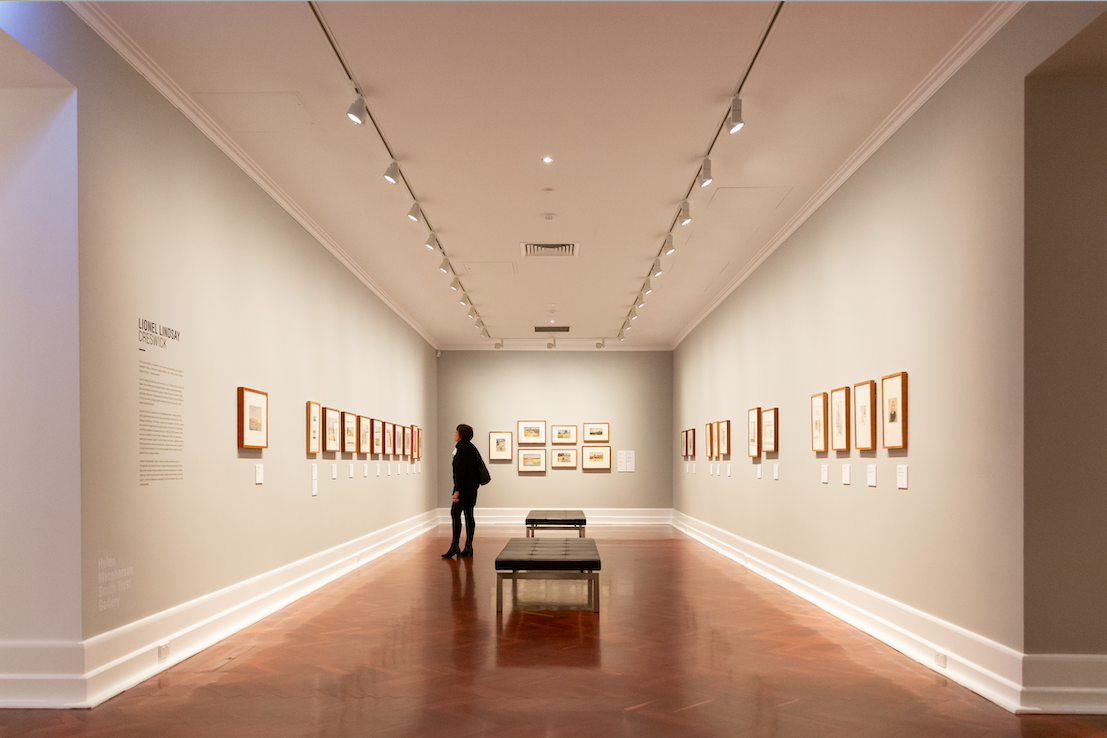Tonal dissonance and painting local: ‘Light + Shade’ at the Art Gallery of Ballarat
/The Art Gallery of Ballarat’s latest revisionist project focusing on their permanent collection is the authoritative and comprehensive ‘Light + Shade: Max Meldrum and his followers’. The exhibits are substantially drawn from the gallery’s own holdings, reflecting its hitherto uncelebrated collection in depth of the work of Meldrum and complemented by a few pertinent loans from private collections. Some works were acquired as contemporary art when newly painted, often via acquisitive awards, and others were gifted or bequeathed by supporters of the gallery. Although there is no catalogue, a clear intentionality and backstory is proclaimed by the wall texts and was further elaborated in June this year when Director Louise Tegart together with John and Peter Perry, authors of several books and catalogues on Meldrum and his associates, spoke at a symposium. A central proposition of the exhibition has been to curatorially focus on other tonal artists beyond the ongoing intense attention paid to Clarice Beckett. The second is to draw public attention to Meldrum’s close professional relationship to Ballarat, especially in the 1920s. Both of these goals have been convincingly delivered.
Meldrum was invited to Ballarat on at least two occasions in the 1920s to present lectures on his controversial theories, and was even celebrated at a civic banquet in his honour attended by the mayor. He was hailed in the press as a world-famous artist whose presence in the city enhanced its cultural standing, although the School of Mines rejected his commissioned 1923 portrait of ‘Mica’ Smith for being too radical. The portrait soon found a willing home at the gallery. Both pupils and patrons resided in the Ballarat region. Notable among these were the local Rowe family who sponsored one of Meldrum’s lecture trips and offered long-term accommodation to both Meldrum and Beckett at different times to paint landscapes at the family property ‘Naringal’, south-west of Ballarat. Maud Rowe was both a friend of Beckett and herself a pupil of Meldrum. Like Beckett, she died relatively young, a year after her friend, and in 1937 bequeathed a notable collection of tonal paintings, including the first Becketts to enter Australian public collections, to the Ballarat, Castlemaine and Geelong galleries. Other paintings by Beckett, Meldrum and fellow artists collected by the Rowe family were destroyed in a fire at ‘Naringal’ in the 1940s.
Actually, the whole tonal movement was closely linked to Central Victoria as many members of Meldrum’s circle had lived and worked there. Beckett spent parts of her youth in Ballarat, attended the city’s Queen’s College, received her first art training with Ballarat artist Eva Hopkins and later moved to Bendigo with her family. John Farmer came from a Ballarat-based family of miners. Alice Bale was more directly associated with Castlemaine, where she was a vigorous force in cultural and civic life for decades. Amalie Colquhoun (nee Feild) taught for a number of years in the 1920s at the School of Mines before she moved to Melbourne. Not only was she sponsored by her employer to undertake advanced studies at East Sydney Technical College and establish pottery classes in Ballarat, she also designed stained-glass windows for some of the many substantial churches in Ballarat, both indications of her high professional standing in the city’s community. Colquhoun was one of the first of many students to make the two or more hours commute by train from Ballarat to Meldrum’s classes in Melbourne from the 1920s to the 1950s, and with possibly the highest profile. Works from a number of Meldrum’s pupils from the Ballarat district, most of whom did not expand their activities beyond their immediate community, provided some unfamiliar inclusions in ‘Light + Shade’.
Irene Hewett was the most intriguing of these local artists. Little is known about her, although she is recorded as having exhibited paintings in Ballarat as early as 1913 before she studied with Meldrum. Yet her striking landscape Black Hill, Ballarat (c. 1930s), which she herself presented to the gallery in 1937, resonates at a national level, especially in light of pressing concerns about the impact and sustainability of the mining sector, through the unusual choice to depict a landscape that is blasted and degraded by decades of such activity. This view is dissonant with the golden and prosperous pastoral vistas which are the most familiar trope of Australian interwar painting. Tonal painting’s stark contrasts of light and dark and the aggressive splintering of expected shapes emphasise the bleak and damaged condition of the land and strange eroded profiles of the hill. A greater contrast to the serene, nurturing and mystic approach of Beckett’s landscapes cannot be imagined. Hewett’s Black Hill is also a reminder that Meldrum was not necessarily a conservative thinker. He was an atheist and anti-Nazi defender of free speech and human rights in the 1930s, and such relatively non-conventional thought was shared around his associates.
Juliette Peers, Ballarat
Curated by Louise Tegart, ‘Light + Shade: Max Meldrum and his followers’ is at the Art Gallery of Ballarat until 16 October 2022. This is an excerpt from a longer review that will be appearing in the forthcoming Summer 2022–23 quarterly edition.








